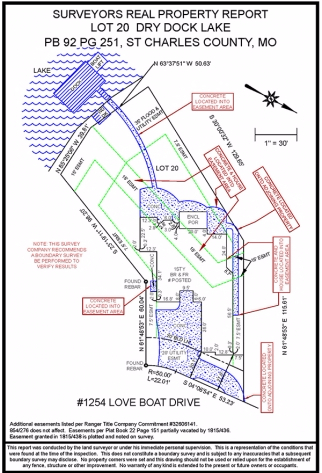A title commitment is the document that a title insurer prepares which shows all of the liens, defects, burdens and obligations that a piece of property and its buyers and sellers have. A survey company reviews this document and uses several portions of the document to perform a survey. Here are the sections we utilize the most:
Schedule A.
- Provides buyer and sellers names – knowing who currently owns the property can aide in the deed research that might be performed by the surveying company.
- Provides the legal description – this is also commonly known as the property description. Typically a Lot number and Subdivision name are located and referenced in a plat book and page that can be found at the Recorder of Deeds. This is the basis of the survey and is a key component to performing a survey.
Schedule B Section II.
- Lists the Subdivision Plat – this is another confirmation of the data that can be used to find, identify, and locate the subdivision plat. Frequently the covenants and restrictions of a subdivision are also listed in this area.
- Lists easements and agreements – if any agreements are made between past or present owners of the property and any other entity (such as a neighbor or utility company), and the document has been recorded, it will be listed in this area. These items would then be shown on the survey drawing if they are applicable.
While a title commitment isn’t necessary to complete a survey, and just a copy of the current deed to the property will suffice, a title commitment is a more complete history of the property. Many deeds don’t reference the easements located on a property, where a title commitment does and is, in my opinion, the greatest asset of the title commitment.
Information provided should not be considered legal advice and all buyers, agents and title companies should consult their attorneys for legal advice.

